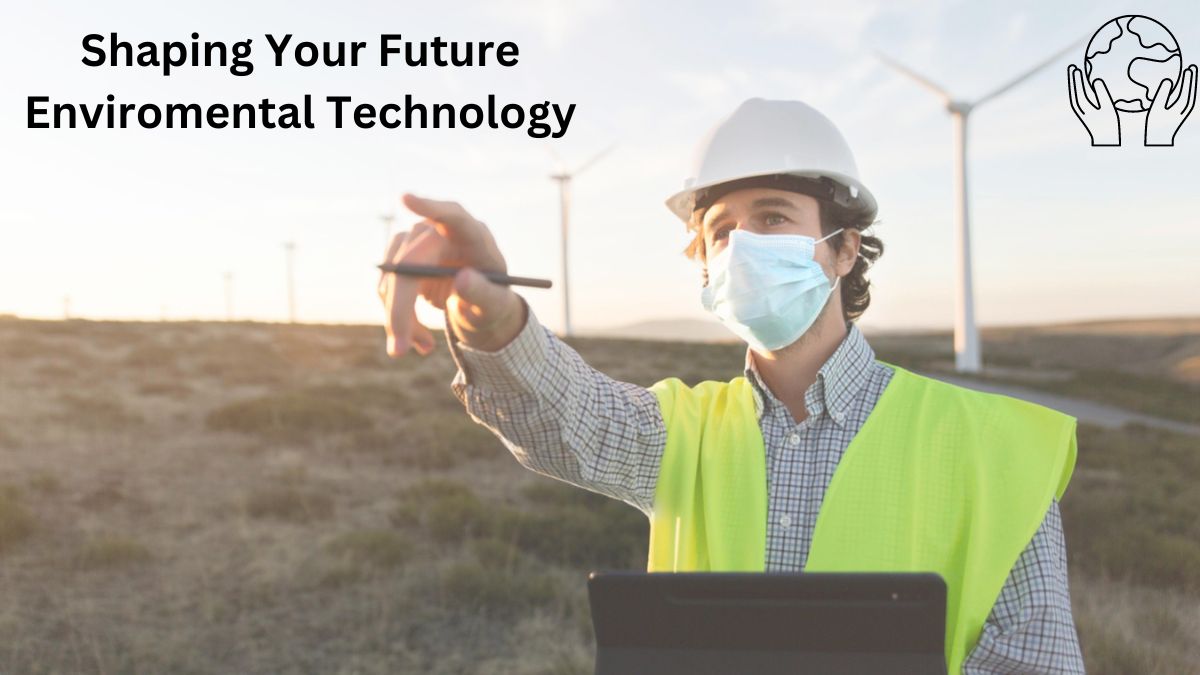Introduction To Environmental Control Technology
When it comes to a term such as Environmental Control Technology (ECT), you can easily think of something out of a movie’s future. But today, it is already playing a vital role in our daily existence.
From improving air quality to creating programs for saving water and energy, ECT for the company is contributing to its sustainable development. ECT, therefore, begs some questions, most of which are, what is it, how is it being employed, and why should they be interested? Let’s break it down.
Define Environmental Control Technology.
In its simplest of terms, Environmental Control Technology can be defined as the processes, the instruments, as well as the approaches dedicated to controlling and enhancing the value of the environment.
It includes the use of the sciences of physics, and biology as well as information technology in the containment of pollution, enhancing the use of natural resources encouraging traits of sustainable living.
As the name suggests, ECT is simply about commanding control over the breath of air that we take, the water that we drink as well as the energy that we consume to make our lives comfortable without affecting the well-being or damaging the environment of our mother nature in any way.
Environmental Control Technology comprises the following elements:

Air Quality Control
Pollution of the environment especially in areas where industries and human dwellings are located is of major concern. Scrubbers, filters, and air purifiers are some of the technologies applied to capture the pollutants.
For instance, industrial air filtration systems assist industries to prevent discharges and thereby decrease dangerous products such as carbon dioxide and particulate matter from escaping into the environment.
Water Treatment Systems
Water is among the principal human needs, and ECT also has a significant responsibility for supplying communities with clean water. Purification processes such as reverse osmosis and ultraviolet purification eradicate the impurities making the water good for drinking.
Waste Management
It directs its concern on waste management and finds ways how to manage it effectively and efficiently. Bioenergy systems are those advanced systems in which waste material is converted to usable energy instead of going to landfills. Other elements of waste management by the ECT include also recycling and composting.
Energy Efficiency
Saving energy is one of the core elements of ECT. For instance, solar panels, energy-saving machines, and smart networks enhance the shift from the use of fossil energy sources.
ECT also contributes to a reduction of the utilization of energy and the release of greenhouse gases due to its support of renewable energy and energy-saving gadgets.
Why Environmental Control Technology Is Important
Reducing Pollution
ECT assists in the fight against pollution as it offers methods for controlling emissions. Some of the examples include air purifiers, which filter out the unwanted particles resulting in the improvement of the quality of both indoor and outdoor air.
Similarly, the purification of water that has been in one way or another contaminated by water treatment systems to make it safe is useful in preventing waterborne diseases that are quite common.
Saving Energy
ECT’s mission is geared towards the efficient use of energy through the provision of products that can be used without having to make use of sources of energy like coal or oil.
The use of renewable energy especially solar and wind energy and the use of energy-conserving products can significantly reduce the emission of greenhouse gases. This not only benefits the planet but also the costs of energy is having a lower degree.
Improving Public Health
Through improving and maintaining the quality of air and water through its services the general public benefits in the sense that health is improved.
Reducing the amount of pollution in the air causes respiratory diseases, while the provision of pure water eradicates diseases associated with water sources, hence improving the general health of people in the societies.
Examples of the Real World Application of Technologies in Environmental Control

Smart Homes
Most contemporary dwelling spaces feature intelligent climate regulation means that facilitate the efficient usage of energy. For instance, smart thermostats will look at the daily behavior of the user and automatically alter heating or cooling to minimize energy use.
This not only saves energy but also has some effect on the utility bills thus contributing to efficient homes.
Industrial Use
In industrial sectors; ECT is used for emission, water consumption, and waste minimization. Air filters and water recycling are used in factories today and they protect the environment from pollution while at the same time ensuring that production is not affected.
Agriculture
Farmers are using ECT now as an effective tool to avoid the wastage of water and minimize energy consumption. Irrigation undertaken makes water-sparing use while renewable energy from the sun is harnessed through solar panels to power the operations of the farm.
Transportation
ECT has resulted in significant changes in the transportation sector especially by the increased use of electric vehicles (EVs). Battery-powered electric vehicles or better still electric vehicles, which are charged by renewable energy, emit no gases and hence are environmentally friendly as compared to gasoline vehicles.
Future of ECT
In the future, Environmental Control Technology will develop further, and present more advanced beginnings in today’s environmental issues. For instance, smart cities shall incorporate ECT in tracking air pollution, in the conservation of energy as well as in waste disposal.
The wind and solar energy will continue to increase slowly taking a lead from the previous fossil fuels energy resources. Besides, the adoption of advanced technologies such as artificial intelligence (AI) and machine learning will lead to better management and utilization of environmental systems and decreased levels of wastage.
Conclusion:
Environmental Control Technology is more than just a trend it is indeed the new way, the right way, and the only way we can teach people how to become good stewards of the environment. ECT helps us save the planet and ourselves by cutting pollutant emissions, decreasing energy consumption, supporting public health, and promoting sustainable development.
Both the direct consumer who seeks to lower their energy utility bills and the business person who wants to achieve his or her company’s green goals are all in agreement to adopt ECT solutions.
When we turn to the future, one must conclude that ECT will always be at the forefront of handling the current environmental challenges that are experienced across the world.
Therefore, the next time you hear anything related to Environmental Control Technology, do not just dismiss it as some fashion or terminology; it has the potential to determine the world we are going to live in.
If you want to see more information about Environmental Control Technology Click Here…
FAQs
What is the main goal of Environmental Control Technology?
ECT aims to reduce pollution, conserve resources, and promote sustainable development by using advanced technologies to manage environmental conditions.
How does ECT improve public health?
ECT improves public health by enhancing air and water quality, which reduces the risk of diseases related to pollution and contaminated water.
Can ECT help reduce energy costs at home?
Yes, ECT technologies like smart thermostats and energy-efficient appliances can significantly reduce energy consumption and lower utility bills.
Is ECT being used in agriculture?
Absolutely. ECT helps farmers conserve water, reduce waste, and adopt renewable energy sources, making farming more sustainable.
What role does AI play in the future of ECT?
AI and machine learning will optimize environmental management, allowing for more efficient use of resources and better pollution control.
Click here to Check Out Best Christmas Drawing Ideas.










